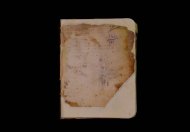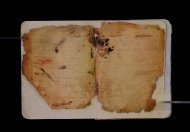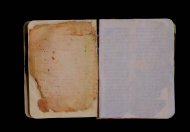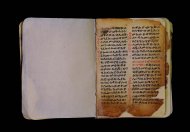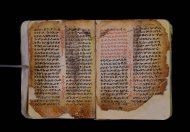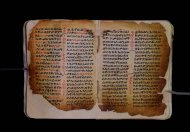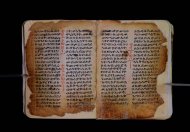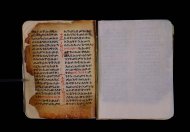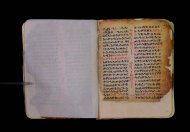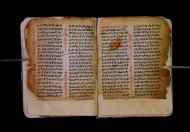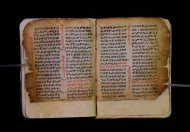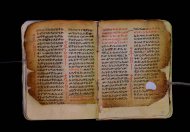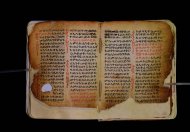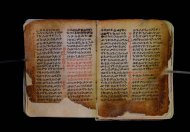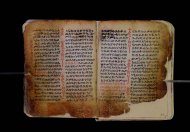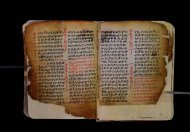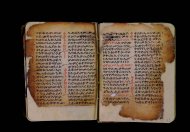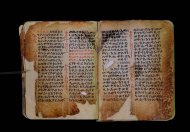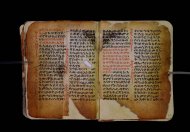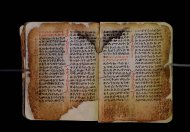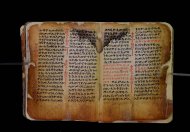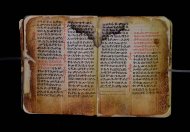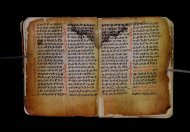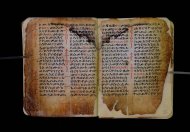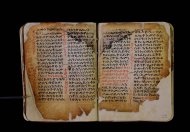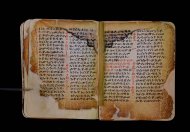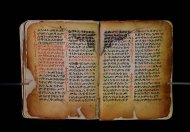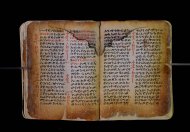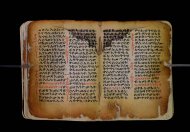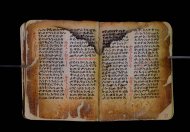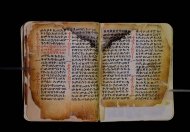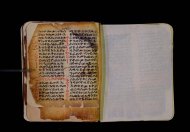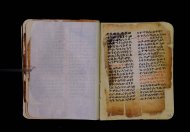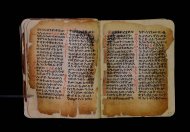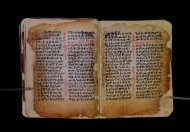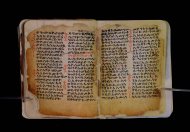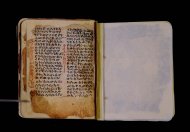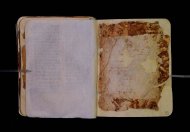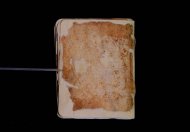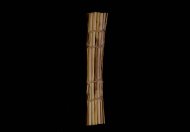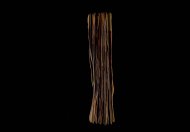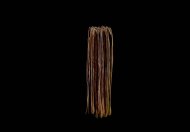|
Shelfmark |
3838 (olim Mordini 191) |
|
Owning institution |
Biblioteca Palatina, Parma |
|
Typology |
Codex |
|
Copying date |
14th–15th century, dated on a paleographical basis. |
|
Title |
Mäṣḥafä säʿatat (“Book of the Hours”) |
|
Subject |
Liturgy |
|
Language |
Gǝʿǝz |
|
Short description of the content |
Ff. 3ra–34vb: Mäṣḥafä säʿatat (“Book of the Hours”, CAe 1961). The text is fragmentary: three sequences have survived.
Incipit: […]ክሙ። ወትጽርቁ፡ በተፋቅሮ፡ ወትኅበሩ፡ ወትዕቀቡ፡ በአሐዱ፡ መንፈስ። ወበማእሠረ፡ ሰላም፡ ወበአሐዱ፡ ሥጋ፡ ወበአሐዱ፡ መንፈስ፡ በከመ፡ ተጸዋዕክሙ፡ በአሐዱ፡ ተስፋ ክሙ። አሐዱ፡ እግዚአብሔር፡ ወአሐቲ፡ ሃይማኖት። ወአሐቲ፡ ጥምቀት፡ ዕቀብዎሙ፡ አሐዱ፡ እግዚአብሔር፡ አብ፡ ዘላዕለ፡ ኵሉ፡ ወበዋሕድ፡ ወልዱ፡ ኢየሱስ፡ ክርስቶስ፡ ቃሉ፡ ዘተሰብአ።
Incipit: ረ። ኦእግዚኦ፡ እልብ፡ ኀጢአት፡ ርድአነ፡ ወተወከፍ፡ ስእለተነ፡ ኀቤከ፡ እስመ፡ ለከ፡ ስብሓት፡ በቅዳስያት፡ እግዚአ፡ መሐረነ፡ እግዚአ፡ ባረከነ፡ አሜን።
Incipit: ትጸማሂ፡ ሕይወተነ፡ ወበእንተ፡ ምግባራቲነሰ፡ አልብነ፡ ድኂነ። ወበእንተዝኬ፡ ናስተበቍዕ፡ ኀቤከ፡ እንዘ፡ ንብል፡ በዓይነ፡ ምሕረት፡ ነጽር፡ እግዚኦ፡ ኀበ፡ ምስኪነተነ፡ ወአድኅነነ። |
|
Writing material |
Goat parchment |
|
Outer size of the textblock |
152 x 115 x 9.5 mm |
|
Number of folia |
35 |
|
Blank folia |
– |
|
Binding |
Missing. |
|
Sewing |
Missing. |
|
Sewing pattern |
– |
|
Slip case |
– |
|
Quires |
7 |
|
Quire marks |
– |
|
Layout |
2 columns. |
|
Number of lines per column |
22–23 |
|
Ruling |
Blind ruling, from outside to inside. Lines are written above the ruling. |
|
Ruling pattern |
Nosnitsin 1 |
|
Scribe |
Unknown. |
|
Colophon |
– |
|
Additional notes |
– |
|
Decoration |
– |
|
State of preservation of the binding |
Defective. |
|
State of preservation of the textblock |
Defective. |
|
Provenance and history |
The codex is not mentioned by Antonio Mordini in the inventory list of the books of the monastic collection of Gundä Gunde. However, there is no doubt that it belonged to his private collection in Barga (Lucca). In 1994 the Italian Ministry for Cultural Heritage bought the collection, which until then had remained the property of the family of Antonio Mordini. The book entered the Biblioteca Palatina in Parma as part of the Mordini collection (cf. Fiaccadori, G., 1995, ‘I manoscritti etiopici di Antonio Mordini’. Malacoda 57 (1995), 24–27). The manuscript was restored by the CaNaMEI project in 2022. |


